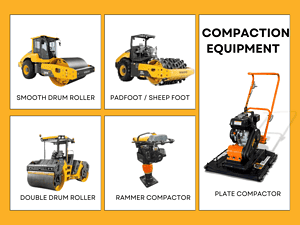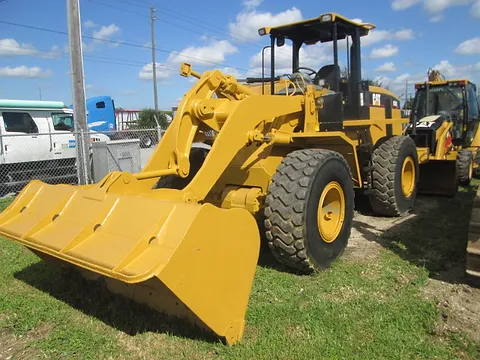Wheel loaders can cost a lot, or they can cost very little. It all depends upon how much digging, hauling, and just plain work you want that thing to do for you. Here at our extremely helpful book that I promise you’ll love, you can get the nitty-gritty on exactly what determines whether your loader is a high or low hour machine.
The price of a wheel loader is influenced by various factors, including brand, size, engine power, and market conditions. Understanding how brand reputation, the machine’s age, and technological features contribute to pricing is essential for buyers. Additionally, regional variations and financing options can significantly impact the total cost. This article will help you navigate these factors and make the best decision when purchasing a wheel loader.
Now, let’s dive into the key factors that affect chargeuse sur pneus prices, so you can choose the best option for your needs.

Table des matières
BasculerFactors Affecting Wheel Loader Price
Brand and Manufacturer
Impact of Brand Reputation: Why Established Brands Like CAT, Komatsu, XCMG, Liugong, and SDLG Command Higher Prices
The brand also affects the cost when buying a wheel loader for road work. The big brands like Caterpillar (CAT), Komatsu, XCMG, Liugong, SDLG, and others are known for making a reliable, high-performance machine. That brand typically costs more because the technology in it is better, the machine is built stronger, and their network for support after the sale is stronger.
Brand Impact on Price
| Marque | Price Range (USD) | Features |
| Caterpillar (CAT) | $100,000 – $250,000 | High durability, excellent after-sales service |
| Komatsu | $90,000 – $230,000 | Advanced technology, fuel efficiency |
| XCMG | $80,000 – $200,000 | Cost-effective, reliable for large projects |
| Liugong | $70,000 – $190,000 | Good performance, value for money |
| SDLG | $75,000 – $180,000 | Strong performance in tough environments |
Why Brand Matters:
- Reliability: Premium brands like CAT and Komatsu tend to be more reliable and require fewer repairs, which can make the upfront cost well worth it in the long run.
- Warranty and Support: You get better warranties and more support after the sale because you’re buying a known brand.
- Resale Value: Well-known brands like CAT and Komatsu hold their value better over time if you choose to sell.
Machine Size and Capacity
Small vs. Large Wheel Loaders: Price Differences Between Compact and Heavy-Duty Models
The size and capacity of the wheel loader directly affect the price. Smaller, compact wheel loaders are less expensive than larger machines intended for heavy duty. A machine that will lift heavier and has more sophisticated things inside it like better fuel efficiency will always sell for more money.
Price Range by Machine Size
| Machine Size | Price Range (USD) | Typical Applications |
| Compact (5 – 8 tons) | $50,000 – $120,000 | Landscaping, small construction projects |
| Medium (8 – 15 tons) | $80,000 – $180,000 | Road work, agriculture, general construction |
| Large (15+ tons) | $150,000 – $300,000 | Mining, large-scale construction, demolition |
Applications and Uses:
Smaller Loaders: Ideal for tight spaces and lighter work, resulting in lower prices but limited lifting capacity.
Larger Loaders: High lifting capacity and heavy-duty capabilities make them pricier but necessary for larger projects.
Age and Condition of the Wheel Loader
New vs. Used: Price Variance Between New and Second-Hand Machines
New machines run a lot higher than used machines, but if you can afford a new machine, go for it. Condition matters. If you can buy a good used wheel loader with 5,000 hours on it, you can afford it and still have a machine that’s in good shape. For a backhoe, tractor, or bulldozer that you’re going to use a lot, you may want to buy new or very low-hour or with clear ownership, where you can find out who operated it and how it was used because these are going to be the higher profit machines.

New vs. Used Wheel Loader Price Comparison
| Condition | Price Range (USD) | Typical Age | Features/Condition |
| Nouveau | $100,000 – $250,000 | 0 – 3 years | Warranty, latest tech |
| Used (Good Condition) | $50,000 – $150,000 | 3 – 10 years | Well-maintained, lower operating hours |
| Used (Poor Condition) | $30,000 – $80,000 | 10+ years | Higher maintenance, older tech |
Maintenance and Usage History:
- Low-Hour Machines: Machines with fewer hours of use tend to have a longer lifespan and are more expensive, even in the used market.
- High-Hour Machines: Older machines or those with higher hours of use can offer savings upfront but may require more repairs down the line.
Engine Power and Technology
Engine Specifications: The Role of Horsepower and Fuel Efficiency in Pricing
The next thing that affects the price of a wheel loader for road work is horsepower (HP) of the engine. The more horsepower, the more it costs to buy the wheel loader. The more horsepower, the harder it lifts and the longer it
lasts. A fuel-efficient engine helps keep the operating costs down, which makes it worth the extra money you have to pay to buy it.
Price by Engine Power
| Engine Power (HP) | Price Range (USD) | Key Features |
| 100 – 150 HP | $50,000 – $120,000 | Basic functions, smaller fuel tanks |
| 150 – 200 HP | $120,000 – $180,000 | Higher lifting capacity, better fuel economy |
| 200+ HP | $180,000 – $300,000 | High performance, fuel-efficient engines |
Advanced Technologies:
- Automation & GPS: There are machines with automated controls or come with things like telematics and GPS tracking systems that raise the price but can help you be more efficient and saves you labor costs.
- Fuel Economy: Machines that use less fuel or have an eco-friendly engine may cost more to buy, but they save on operating costs over the long run.
Popular Topics on Wheel Loader Price
How to Negotiate Wheel Loader Price with Dealers
Tips for Price Negotiation:
- Know Your Budget: Set a price range based on your needs and the current market value.
- Get Multiple Quotes: Compare offers from different dealers to find the best deal.
- Ask for Discounts or Promotions: Dealers often offer discounts during off-peak seasons or end-of-year sales.
If you’re fortunate enough to have a budget available to purchase multiple units, you now have the power to ask for a better price on each loader or other additional benefits that become extremely valuable for your business, like extended warranties on each machine.
The Impact of Wheel Loader Attachments on Price
Subcompact and compact tractors are worthless without a front-end loader. Birds likes to see tractors with front-end loaders because there are so many uses for them around a farm. If you’re buying compact or subcompact tractors, you’re probably going to end up buying that front-end loader anyway. However, keep in mind that every time you have to buy that loader or rent it, it’s going to cost you money. So before you buy all the attachments, think what you’ll actually use on a consistent basis.
Common Attachments and Their Costs
| Attachment | Price Range (USD) | Common Applications |
| Bucket | $3,000 – $15,000 | Loading, lifting materials |
| Forks | $2,500 – $10,000 | Lifting and transporting goods |
| Grapple | $4,000 – $12,000 | Handling bulky or irregular materials |
Select Attachments Based on Application: Make sure you are purchasing the attachments necessary for your application. If you purchase every attachment known to man, you will pay for them all several times over. Summary: When selecting a Skid Steer Loader, the machine is relatively standard. You can buy larger engines and frames, but in general, more is not better because of operating capacity. Choose attachments based on your requirements to keep costs optimized. Overloading the loader with every attachment you might use inflates the price unchecked.
Seasonal Fluctuations in Wheel Loader Price
- Best Time to Buy: While it can largely depend on who is selling the loader, in general, you may always fare better in the winter when no one is buying. The later you can wait to buy during that off-season is when you will get the best deal. This could be in the fall or the dead of winter if you’re in the northern United States or Canada.
- Impact of Year-End Sales: This is potentially a good time to buy as companies look to reduce inventory to hit their financial targets. They have to sell equipment and parts to hit their sales budget for the year. If they are close, they will do anything to make sure they hit their target. If you are ready to pull the trigger on a wheel loader, wait until the last week of the year because the salesperson, manager, and the owner may be eating the rock to make the deal happen.

The Cost of Wheel Loader Maintenance and After-Sales Support
- Long-Term Cost Considerations: Regardless of what you pay for a wheel loader, you still have to maintain it. Don’t forget about the ongoing costs of lubrication, oil changes, filters, and replacing wear parts. The frequency and severity of those will sway your total cost of ownership one way or the other. Reliable after-sales service and warranty options can make this easier to deal with over time. Use a TCO calculator if you’re going to own the machine a long time.
- Support and Service Agreements: Some OEMs offer service packages or extended warranties — spiffs that make it easier to swallow the price because you know the maintenance costs are a known factor.
Location and Market Variations
Regional Differences in Price
Prices for chargeurs de roues can vary drastically depending on where you are located. Different regions have different prices due to factors such as local demand, taxes, tariffs, and the dealer network in that area. Sales prices of certain models may also change, depending on which country the loader is being sold in, particularly once you start factoring import duties, taxes, and everything else placed on equipment type items. A CAT or Komatsu loader in the United States might not be the same price as it is in Mexico or Germany or Australia or China.
Price Variations Based on Location
| Region | Price Range (USD) | Influencing Factors |
| North America | $100,000 – $250,000 | High demand, availability of dealers |
| Europe | $90,000 – $230,000 | Taxes, import tariffs |
| Asia | $70,000 – $200,000 | Local manufacturing, lower costs |
| Africa | $80,000 – $220,000 | Shipping costs, demand fluctuation |
| South America | $75,000 – $200,000 | Shipping, regional demand |
Another big piece of the equation is shipping and import duties. These costs can massively affect the price of wheel loaders if they’re being imported from one place to another. For example, you might buy a Liugong loader in China for a great price. However, shipping that from China to South America ratchets up the cost because of international shipping rates and customs duties. The price of that Chinese loader in South America could easily be more expensive than a local competitor manufacturing that equipment type.
Shipping and Import Costs
Shipping and import duties are huge in the total price of any construction equipment, including wheel loaders. You have to pay to ship equipment like that from China, where XCMG and Liugong are headquartered, to Africa or South America. It costs money to get it there! Then once it gets there, they have to pay import duties. What those duties are generally depends on trade agreements between your country and China, and your country’s tax policy, all of which directly affect the selling price.
Estimated Shipping and Import Costs
| Region | Estimated Shipping Cost (USD) | Import Duty (% of price) |
| North America | $5,000 – $10,000 | 10% |
| Europe | $7,000 – $12,000 | 15% |
| Asia | $4,000 – $8,000 | 5% |
| Africa | $6,000 – $14,000 | 20% |
| South America | $5,500 – $11,000 | 18% |
By considering your payment choices and factoring all the out-of-pocket expenses necessary to get the wheel loader to your job site, you can more accurately determine the actual price. Unequivocally, anything coming cross an ocean will cost you more money than you anticipate, believe, or hope. Period. So as you plan your budget and consider a wheel loader, account for the costs of shipping the machine and the import duties you’ll have to pay to get it here.

Financing and Payment Terms
Impact of Financing Options
A lot of times, buyers will use finance options to finance a chargeuse sur pneus. Since you’re paying a giant lump sum up front, a finance option helps to spread out your payments over time. You’re not always going to pay cash for this piece of equipment. You’ll probably have financing, which will include interest. The bank won’t loan you that money for free. You need to make sure you calculate the total price of the wheel loader and not just the monthly payment or the down payment.
Financing vs. Cash Purchase
| Payment Method | Down Payment (USD) | Monthly Installment (USD) | Total Paid (USD) |
| Financing (5 years) | $20,000 – $50,000 | $1,000 – $3,000 | $130,000 – $280,000 |
| Cash Purchase | $100,000 – $250,000 | N/A | $100,000 – $250,000 |
One nice thing about financing is that it lets you manage your cash better. You make payments over time rather than paying cash all up front. But remember, financing includes interest. You’re not going to borrow money from the bank without paying interest on that borrowed capital. Make sure when you’re calculating the total purchase price of that wheel loader and not just using the monthly payment or the down payment. Also, dealers can offer leasing options. Depending on your financial situation, leasing may be an even better deal. For example, you lease a machine for a year to work on one project because you don’t need that equipment long-term.
Leasing vs. Purchasing
Lastly, the decision to lease or buy a wheel loader comes down to your needs. Leasing is excellent if you don’t plan to own said machine long-term and don’t have the cash to buy one outright. But if you purchase a machine, you own that machine. You’re usually better off financially if you plan to use it a lot and use it for an extended time.
- Leasing: Typically requires lower monthly payments, but you don’t own the machine at the end of the lease.
- Purchasing: Higher initial cost but long-term ownership benefits, including potential resale value.
Conclusion
Understanding this pricing model is key when you are looking to purchase a chargeuse sur pneus. From the brand name such as CAT, Komatsu, XCMG, Liugong, and SDLG, all the way down to the size and horsepower of the machine. There are a lot of factors that affect the price of a wheel loader. You also need to look at the age of the machine, how well it was maintained, size of the machine, what attachments it might come with, and what the market is doing at the time you are looking to buy.
Timestamp your purchase with seasonal variations and look at financing or leasing options. And don’t forget to consider any additional import costs or regional dealer variations. With all this in mind, you can make a good decision on whether to buy new, or buy used, or buy a cat or a used loader from some great brands I’ll get to in the next section.
Keep all this in mind so you can get the best price and the best value from your purchase. Just think about your total cost of ownership. Also, consider maintenance, after-sale support, and any required attachments. Add it all up, and if you win, or it looks pretty close, negotiate the best deal you can. Check out your options for financing with the various dealers, and with your local bank or credit union.
Ultimately, purchasing a wheel loader is more than just buying based on price. It’s about the total cost and getting the loader that best fits your business’s needs while still keeping your payment low. With some research and planning, you can find a good wheel loader to fulfill your needs and stick with your budget.
Suivez-nous sur:Youtube.










